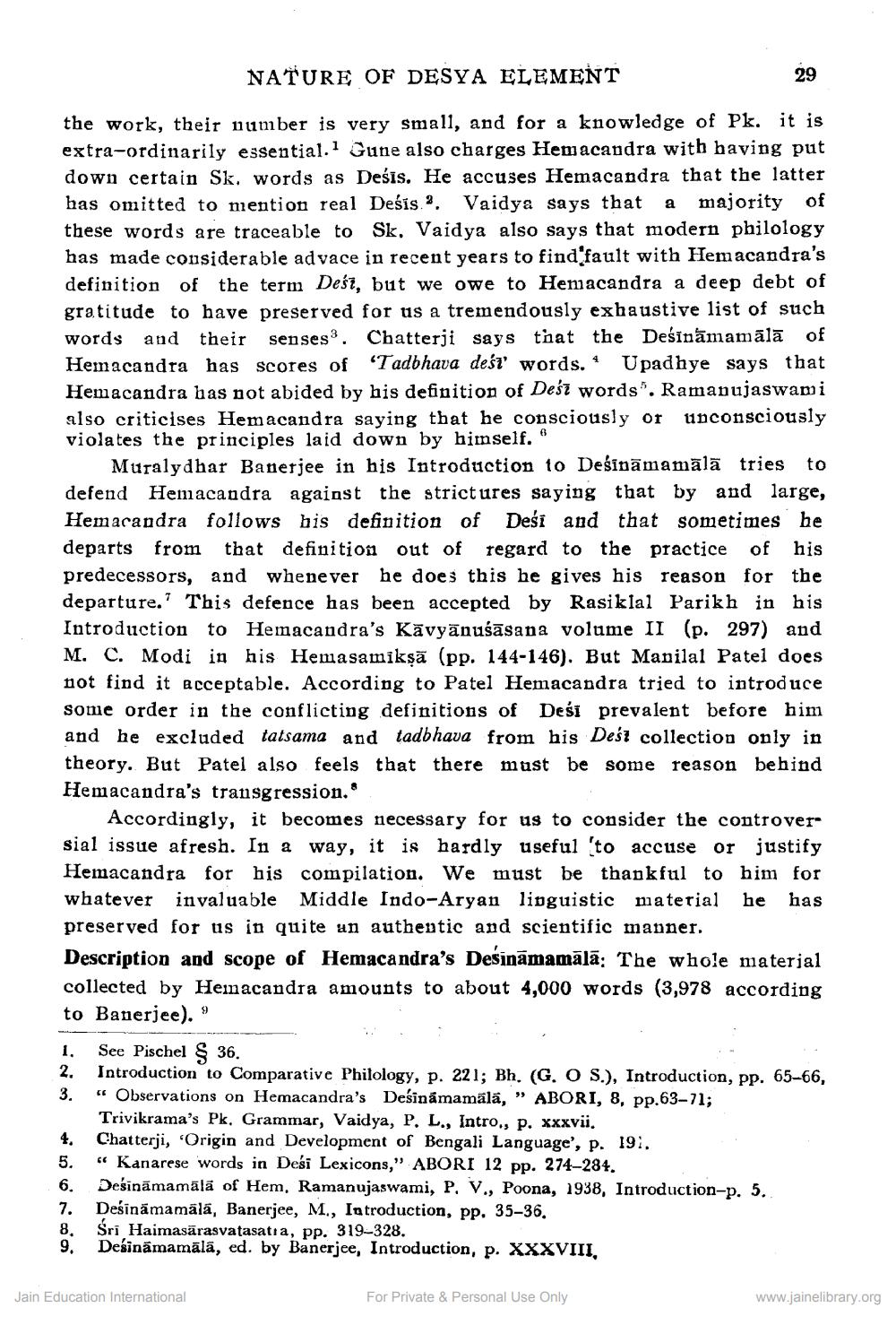________________
NATURE OF DESYA ELEMENT
29
the work, their number is very small, and for a knowledge of Pk. it is extra-ordinarily essential. Gune also charges Hem acandra with having put down certain Sk. words as Deśis. He accuses Hemacandra that the latter has omitted to mention real Deśis.. Vaidya says that a majority of these words are traceable to Sk, Vaidya also says that modern philology has made considerable advace in recent years to find fault with Hemacandra's definition of the term Deśr, but we owe to Hemiacandra a deep debt of gratitude to have preserved for us a tremendously exhaustive list of such words and their senses. Chatterji says that the Dešināmamālā of Hemacandra has scores of "Tadbhava deśr' words. 4 Upadhye says that Hemacandra has not abided by his definition of Deść words". Ramanujaswami also criticises Hemacandra saying that he consciously or unconsciously violates the principles laid down by himself.
Muralydhar Banerjee in his Introduction to Dešināmamālā tries to defend Hemacaudra against the strictures saying that by and large, Hemacandra follows his definition of Desi and that sometimes he departs from that definition out of regard to the practice of his predecessors, and whenever he does this he gives his reason for the departure.' This defence has been accepted by Rasiklal Parikh in his Introduction to Hemacandra's Kävyänuśāsana volume II (p. 297) and M. C. Modi in his Hemasamiksā (pp. 144-146). But Manilal Patel does not find it acceptable. According to Patel Hemacandra tried to introduce some order in the conflicting definitions of Deši prevalent before him and he excluded tatsama and tadbhava from his Deść collection only in theory. But Patel also feels that there must be some reason behind Hemacandra's transgression.
Accordingly, it becomes necessary for us to consider the controversial issue afresh. In a way, it is hardly useful to accuse or justify Hemacandra for his compilation. We must be thankful to him for whatever invaluable Middle Indo-Aryan lipguistic material he has preserved for us in quite an authentic and scientific manner. Description and scope of Hemacandra's Deśināmamālā: The whole materjal collected by Hemacandra amounts to about 4,000 words (3,978 according to Banerjee). 9
2.
See Pischel 36. Introduction to Comparative Philology, p. 221; Bh. (G. O S.), Introduction, pp. 65-66, “ Observations on Hemacandra's Desinamamālä, ” ABORI, 8, pp.63-71; Trivikrama's Pk. Grammar, Vaidya, P. L., Intro., p. xxxvii. Chatterji, 'Origin and Development of Bengali Language', p. 19, “ Kanarese words in Desi Lexicons," ABORI 12 pp. 274–284. Dešināmamālā of Hem, Ramanujaswami, P, V., Poona, 1938, Introduction-p. 5. Desinämamālā, Banerjee, M., Introduction, pp. 35-36. Sri Haimasārasvatasatia, pp. 319-328. Dešinamamāla, ed. by Banerjee, Introduction, p. XXXVIII.
9.
Jain Education International
For Private & Personal Use Only
www.jainelibrary.org




